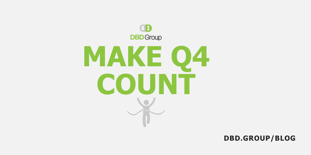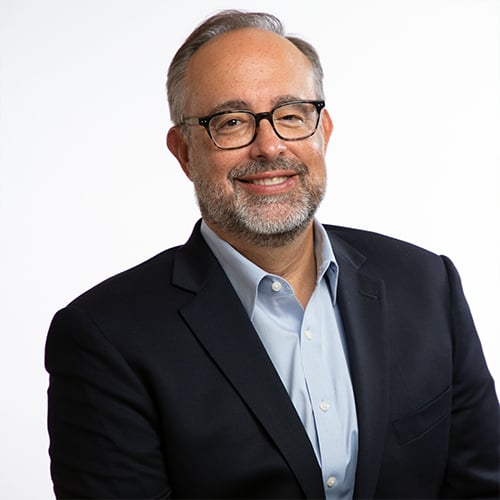 With the fourth quarter of the year is in the near future, this month we'll be sharing ways for nonprofits to make the most out of the last quarter and guidance for leaders as you are mapping out plans for the upcoming year.
With the fourth quarter of the year is in the near future, this month we'll be sharing ways for nonprofits to make the most out of the last quarter and guidance for leaders as you are mapping out plans for the upcoming year.
What is the Economy's Influence on Fundraising?
As we seem to be emerging from the pandemic, the economy appears to have caught the flu. Inflation, the cost of money, the cost of everything is going up and charting the markets looks like an EKG. Are there storm clouds ahead or more than that? How does this affect donors and our varied fundraising campaigns?
These are just some of the questions I’m getting lately. Let’s explore a few of the answers together.
Radical Stewardship
This is the time to stay close to those who love you most! During the height of the pandemic, we used a camping metaphor, encouraging nonprofit leaders to identify those that were in your tent (your top 20 donors) and those around your fire (your next 30 donors). Over-communicate to these folks. Ask them how they are doing. They in turn will ask about you and your organization and this is your time to tell your better story!
Don’t let the tyranny of the urgent pull you away from these relationships. These donors will help you navigate some of the upcoming uncertainty and challenges. Now is the time to practice radical stewardship! Remember, love them when the market is down and you will be first in line when the economy improves.
Patience
Money is still flowing. Our clients have received 6-, 7-, and 8-figure gifts this year. History has taught us that philanthropy has held up pretty well during economic downturns, especially if you stay close to your top prospects.
What is changing is that the decision-making process for these gifts is taking longer. During this longer cultivation timeline, expect good questions regarding impact, duplicative services and collaboration. We’ve also seen some movement from 5-year pledges to 3-year pledges.
Might take a bit longer to raise those capital dollars? Perhaps. Does it mean you should pause your campaign? Most likely not. Stay in the game!
Related Post: Be Prepared
Nonprofit Collaborations
Many of our clients got far better at collaborating with other nonprofits during the pandemic. As I have the opportunity to visit with amazing donors and prospects, their advice post-pandemic remains the same: collaboration is the future. As the economy tightens up some, donors want their philanthropy to go further faster.
It is time to think about collaborative projects for 2023. Partnerships can be messy. They take time. Revenue and philanthropy are shared. However, when collaborative projects are 1+1=3+, they will win the attention and support of donors.
Foundations
Foundation giving throughout the pandemic was certainly encouraging. Giving USA data shows that $90.88 billion was given by foundations in 2021. In addition, coming out of the pandemic we are seeing foundations more open to general operating requests.
It’s important to understand how most foundations invest and plan for ongoing giving and fiscal vitality. Most foundations use a “smoothing” formula based on a rolling three-year average of the quarterly market values. Ending market values for the last 12 quarters are averaged and the result is then multiplied by the stated spending rate to determine the total amount to be distributed. This amount is then allocated to participating funds based on their pro-rata share of the total investment pool.
This means that when the economy first turns down, foundation giving stays fairly stable. As each quarter ends then we start to see the effects of down quarters in year 2 and 3. And, as the economy starts to improve, it takes some time for the quarterly averaging to bring giving up again.
Get to know your foundation staff. Program officers are there to help guide you and the foundation for maximum impact. Not all foundations follow the above investment formula – and some break the rules in situations of unprecedented community needs (like the pandemic) or for programs with demonstrated impact.
Related Post: Finding Certainty
Follow the Money
Giving USA data for 2021 shows $484.85 billion total giving, from a variety of sources:
- 67% individual giving
- 19% foundation giving
- 9% bequests
- 4% corporate giving
Many of our clients instinctively focus on corporate giving, While it certainly is important, it is only 4% of the pie. We need to make sure we have direct response and major gift strategies for the 67% of the pie – individuals.
Public Support / Government Funding
Many of our clients received life-saving funds from federal, state and local governments over the last two years. There appears to be more support that has been approved in DC and is working its way through the system this year and next.
Stay close with these staff. Tell your better story. Ask if there might be left-over funds, current funds or future funds that could help fund your mission. Stay in relationship. These leaders should be “in your tent” or “around the campfire.”
Go serve your clients. Go make amazing impact in your communities. And go tell your better story to those who can fund your mission. When experienced donors are asked “is it the right time to launch a campaign?” during feasibility interviews they almost always answer “Is there ever a perfect time?”
Regardless of the economy, if you have a compelling need – ask! The donor is ultimately in charge of how and when they donate their resources. My experience is they do pretty amazing things when asked to support a compelling and timely case.
Related Post: A Bias for Action


